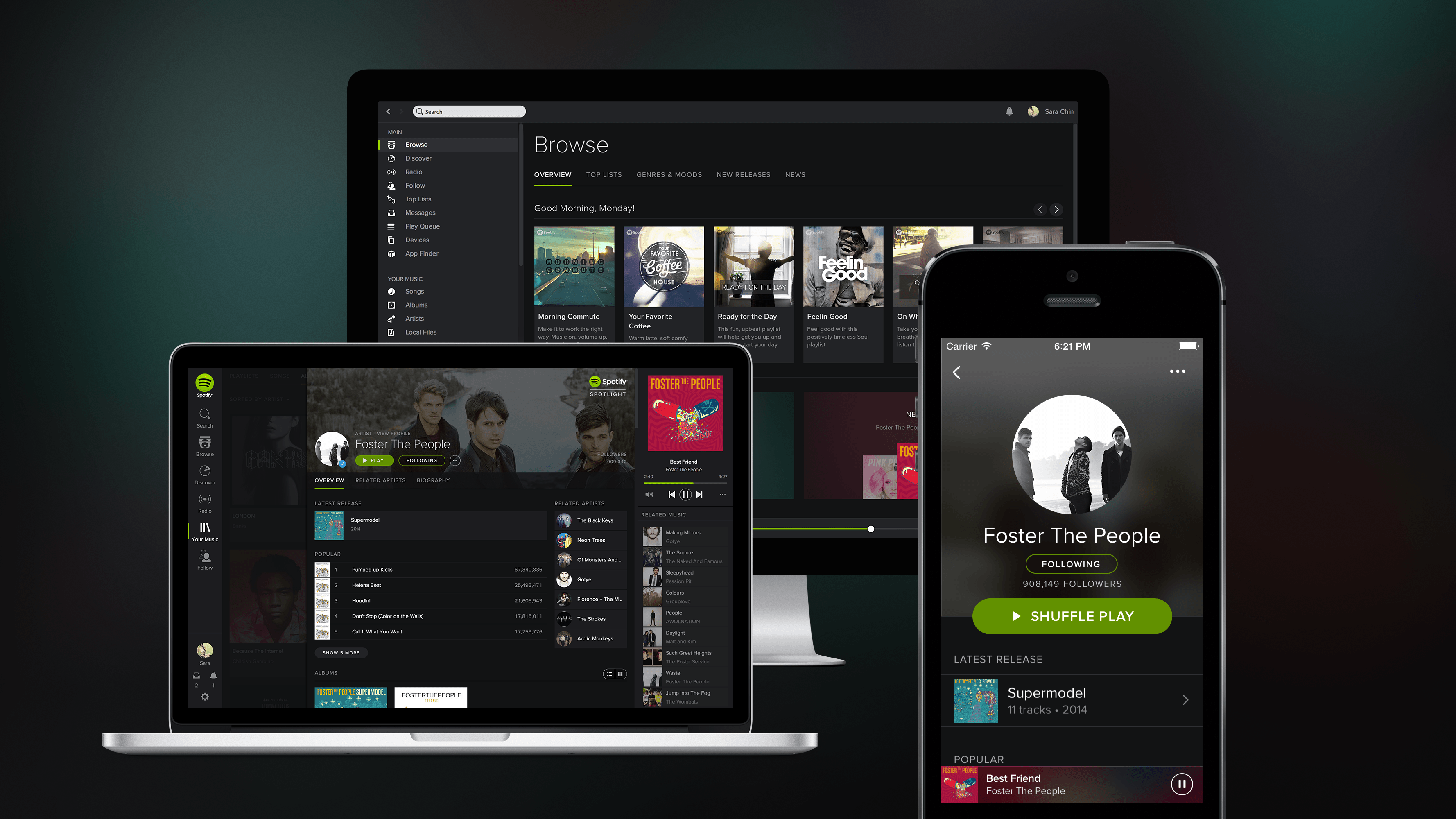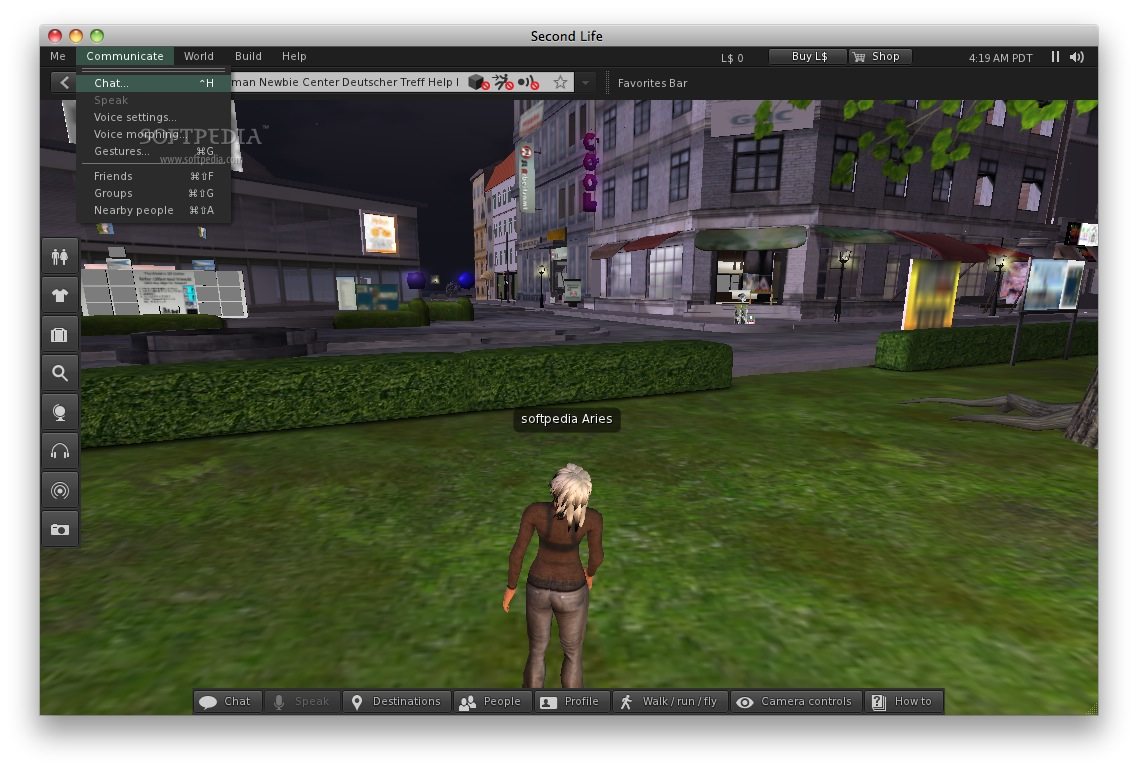
- #Visualiser for spotify mac mac osx
- #Visualiser for spotify mac mac os
- #Visualiser for spotify mac software
- #Visualiser for spotify mac tv
- #Visualiser for spotify mac mac
There are at least a couple of solutions for this. One minor issue is that the display can go to sleep on you and blank out your visualizer. But, there are a couple of other tips to ease the user experience I uncovered in my work that I thought I should also share.
#Visualiser for spotify mac mac
In practical use, I tend to get Spotify playing and G-Force running on my Mac, then switch G-Force to full-screen and control Spotify from the Spotify app on my phone or tablet (while Spotify is running on the Mac connected to the TV). Mission accomplished! As you can see from the video at the top of this post the setup creates a kick-ass visual experience and works flawlessly. With my Mac configured in this way, I immediately had clear, undistorted music playing from my speakers and a beautiful visualization from G-Force. Here is how it looks on my system, which has a USB connection to a Digital Audio Controller (DAC) combined with Soundflower. Once this is set up, you use the combined devices as output in your system Sound preferences and Soundflower as the input to the visualizer. With the Audio MIDI Setup, you create a multi-output device which combines Soundflower with your headphone output and you’re done. Here is a terrific article from Macworld that explains the basics. It turns out Apple has provided a straightforward way to do this through the hidden power of the Audio MIDI Setup. So, the trick is to use Soundflower in such a way that you get multiple outputs that can go both to your visualizer and also to your speakers. The problem is you can’t hear it because Soundflower is feeding the visualizer only. You could tell that the visualizer was immediately responding to the music so the experiment was a success. I installed a fresh copy downloaded from Matt Ingalls (the original author) and set it up in system Sound Preferences using Soundflower as the output and setting the input of the visualizer also as Soundflower. While this sounds a bit esoteric, it’s actually pretty straightforward.
#Visualiser for spotify mac mac osx
Soundflower is a Mac OSX system extension that’s been used in the community for a long time to solve exactly this problem - it’s designed to create a virtual audio output device that can also act as an input. Essentially, you have to create a way to route the sound source to both the visualizer and your speakers simultaneously. It seems like this should be a simple problem to solve - to have the visualizer tap into the sound going to your headphone jack - but it’s not the case.
#Visualiser for spotify mac software
The software is not inexpensive at $30, but you can use that version as long as you want until you need an OS upgrade.The only problem was getting it to work with Spotify. I downloaded the latest G-Force (Platinum) version and it was as good as I remembered, with very beautiful mathematical types of visualizations and a lot of ability to customize. I found a few other programs that were geared more to smart home bulbs that might be able to be repurposed, but it was a surprisingly shallow result to my efforts. I also uncovered another standalone visualizer called Discobrick.
#Visualiser for spotify mac mac os
When I looked up G-Force on the web, I found it was being actively updated to new versions of the Mac OS and that development and fixes were still underway.


If I could get a visualizer that could work with any sound source, I’d have what I wanted. To my surprise, it looked like one of the better solutions. I knew that it had a standalone component, but I’d never really paid that much attention to it. Way back I had occasionally used a terrific visualizer plug-in for iTunes called G-Force. A few years ago Spotify had its own visualizer built in as a hidden Easter Egg, but that no longer exists. I scoured the web, I looked at the App Store, and I looked in Spotify’s user forums.

Since I was particularly interested in Spotify, I Googled around to see if I could find a good visualizer and I was truly surprised that I turned up almost nothing. These directions would also work for any Mac laptop hooked up to a flatscreen.
#Visualiser for spotify mac tv
The thought of running some cool visual effects on this TV was motivating, so I went to the trouble of figuring out some solid solutions, and I’m sharing it with the community so others can have the same fun I’ve had. The display is amazing and since I use a Mac Mini as a music server in my setup, anything I can show on the Mac I can show on the TV. I recently upgraded the TV attached to my home audio system to a brilliant Sony 4K 65” unit. iTunes itself provides some built-in ones that have gotten better and better over time. A visualizer provides animated visual effects based on the music being played. But, ever since the days of Winamp, I’ve liked running a music visualizer for some eye candy while I’m working. I love the exploration, I like the daily mixes. Like many people, I find myself using Spotify more and more.


 0 kommentar(er)
0 kommentar(er)
